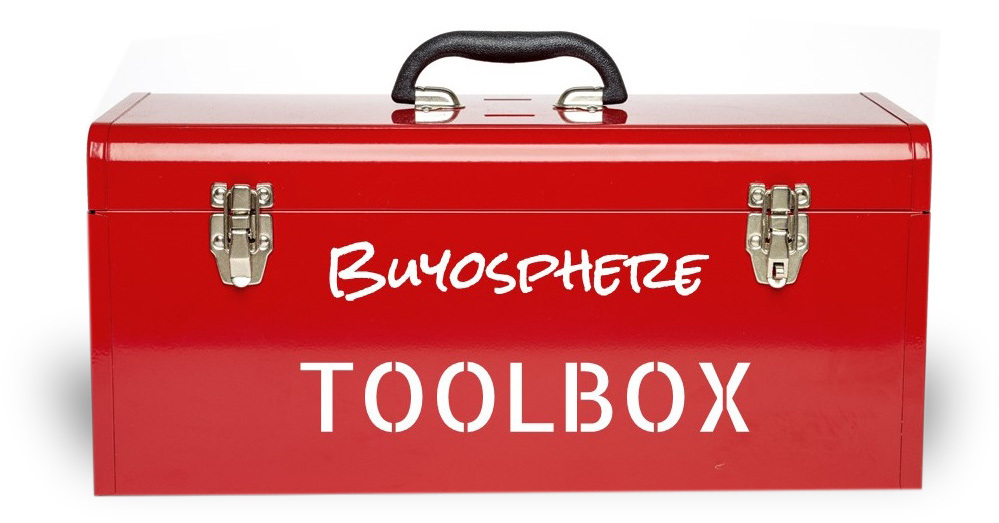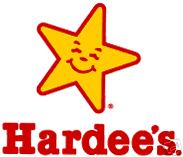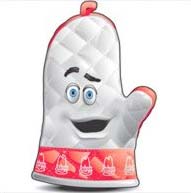Hello shoppers...
1. You’re the only employee working at a small clothing store. You’re engaging a customer when the phone rings. Do you:
A. Tell the customer “excuse me” while you answer the phone, then put the caller on hold while you go back to the customer.
B. Let the phone ring and continue to engage the customer.
C. Take the call and address the caller’s issue, then hang up and come back to the customer.
D. Ask the customer to answer the phone, while you try on this cute new pantsuit that just came in.
The correct answer is B.
To mis-quote an old saying, a shopping bird in the store is worth two on the phone. Consumers want an employee's undivided attention and deserve it. A caller can be anyone - so hope they'll call back and focus all your energy on the shopper at hand.
2. According to a 2006 National Retailer’s Survey, what do consumers remember most about their last shopping experience?
A. The demeanor of the employee who engaged them.
B. Prices/sales.
C. Cleanliness of the store.
D. What a nice sales person that Gary Coleman is.
The correct answer is A.
52% of those consumers surveyed, tended to remember the attitude of who waited on them. That's what we take with us as shoppers, more than anything else, although cleanliness was second, with 21%. Price? It was next to last, at 4%.
3. 80% of the purchasing decisions we make as consumers are based upon:
A. What we think.
B. How we feel.
C. The layout of the store.
D. Whether it includes a free Sham-WOW.
The correct answer is B.
Two different studies done in the mid 90's, including one out of UCLA, found that most of our decisions are formulated by our emotions vs. our thoughts.
In other words, it's not "I've thought about it, and I think the reasonable thing to do is spend $2,000 on a new 9 iron, and here's why." Rather, it's "I feel like buying a new 9 iron which costs two grand - my mind knows its ridiculous, but my heart doesn't give a rat's patooty. I want what I want." Women are much more willing to admit they're governed by their emotions than men, but in the end, our hearts rule our heads, regardless of gender. And don't let any dude tell you otherwise.
4. “Can I help you?” is an example of:
A. A proper retail greeting.
B. An open-ended question.
C. A closed ended question.
D. A VERY polite mugger.
The answer is C.
A closed-ended question, like the one, above, is one which requires little more than a yes or no answer - and is like hitting shoppers over the head with a frying pan.
"Can I help you?" Well let's see...I am a shopper who has specifically chosen your store to walk in to, assumptively to purchase something which will solve a problem (I'm hungry, I'm without transportation, I keep getting arrested because I'm running around naked.) although I could possibly be here because either I'm lost and looking for directions, or mentally ill and think this is my living room. You have been hired by this company presumptively to help people, although the main purpose of your hire could have been to take up space and help the owner reduce his heating bill. But let's assume the former of each role as previously described, for each of us. Can you help me? What do you think, Einstein?
Next time, try "What can I help you with?"
5. A female customer enters a store. Should the employee about to wait on her, shake her hand?
A. Yes – jump right in.
B. It depends – you’ve got to read the situation.
C. It’s not appropriate to shake a woman’s hand until the end of a transaction.
D. Yes, and then while still grasping her hand, the employee should look directly into her eyes and say, “I’m going to read your mind.”
6. Surveys show that consumers would pay more for this:
A. Automated check-out counters.
B. Free product giveaways.
C. Better customer service.
D. “I Can’t Believe It’s Not Pot Roast!”
The answer is C.
Every major research study done over the past 20 years indicates that shoppers will pay more for better customer service - even in a down economy. That should tell you a lot about just how rare good customer service really is.
Speaking of which, coming up next week I'll be talking about stores who put a major emphasis on training their employees to offer exceptional service to their customers, and why we should be shopping there.
7. What two questions asked of a store’s shoppers, will best determine that store’s future success?
A. “Did you enjoy your experience with us?” and “What can we do to make it better?”
B. “How did you find out about us?” and “Where else do you shop?”
C. “Would you come back?” and “Would you tell a friend about your experience?”
D. “Did any of our displays fall on you?” and “Does this work smock make me look fat?”
The answer is C.
Steve Hoisington is senior vice president of organizational effectiveness and quality at Exel. He has also directed quality at IBM and Johnson Controls. Hoisington is a popular speaker on quality and business-related issues and has authored numerous articles in trade journals and magazines. He is the coauthor of Customer-Centered Six Sigma.
So the guy knows his stuff.
In 1989, Hoisington, along with IBM and Coca-Cola, did research and put together an equation which could accurately reflect the total revenue lost by a company, due to poor customer service. One of the findings was that:
"Customers’ subjective views on recommendation and loyalty had the greatest impact on overall satisfaction."
In the study and subsequent equation, the answers to the questions, "Would you shop here again?" and "Would you tell a friend about your experience?" were given the greatest weight in the overall equation, as determinate of a store's future financial success.
Also from the research study:
"Each customer that is not satisfied tells 10 others. This results in market damage, whereby 2% of the people who were told of the bad experiences by the customer not satisfied actually act (or would have acted) based upon the information. The estimated loss in future revenue was also captured by the observation that for every $1 in sales, an additional $4 was generated in revenue over the following 5 years from items such as additional products purchased, finance charges, service fees, and so on."
If those numbers don't scare a business owner into improving their customer service, nothing will.
8. An example of a proper “Activation Greeting” is:
A. “Hi! Welcome to (name of store)”
B. “My name is (employee’s name), let me tell you about our specials.”
C. “How many for dinner?”
D. “All You Can Eat fried chicken is tomorrow, Governor Culver.”
The answer is A.
Again, I'll use the "visitors to your home" analogy. When someone comes to our house, it's reflexive that we say "Hi!" We then might say "come on in" or some other form of welcome - which is why, in customer service training, I tell employees to use what we call an "Activation Greeting," to literally welcome a customer into the store. It's also powerful branding to use the store name, up front. Everything else - asking their name, telling them about store specials, comes after that.
9. When a consumer says “I’m just looking,” how should an employee respond?
A. “Just let me know if you need any help.”
B. “We’ve got some great specials today.”
C. “What are you looking for – maybe I can help.”
D. “Then here, look at this!” And show them your tattoo.
The answer is C.
The tendency for most store staff is to say "well let me know if you need some help." You might as well tell the customer, "Okay, well, I'm going to shut off the lights and go home - lock up, would ya?" You can not abandon them at that point!
Most shoppers who come through the door have never been to your store (at least this is what you're hoping for) They say "I'm just looking" but they really mean is "I'm just shopping - and this whole place is confusing and new to me but I don't want to admit that because I don't want to seem stupid and vulnerable in your eyes, so could you help me without me having to admit that I need help?"
So stay with them. If they really want you to amscray, they'll tell you - but don't assume that's what they want, because you're almost always wrong, Nostradamus.
10. What’s the most important thing to do when engaging customers?
A. Learn their name, and call them by it.
B. Smile at them.
C. Ask questions.
D. Ask if you can borrow ten bucks.
11. Up to 20% of the reason consumers purchase a particular big-ticket item, at that moment, is because:
A. They don’t want to disappoint their sales person.
B. They’re tired of shopping.
C. They don’t think they can get it cheaper, somewhere else.
D. My birthday’s coming up – hint, hint.
The answer is A.
The best sales people are in real estate. Why? Because they sell the items with the biggest price tags (I can't speak for "Nuclear Sub Reps.") One of their greatest qualities is being able to personally connect to home buyers and sellers - that's by design. It's much harder to move on to another sales person once rapport has been established and it's especially hard to say "no" to someone you like. I'm convinced that a part of "buyer's remorse" comes from the buyer's realization, once they get their item home, that the person who sold it to them, doesn't come with it.
12. 12 questions on an 11 question quiz is an example of:
A. The kind of thing that used to really tick me off about my high school English teacher.
B. An upcoming plot line on Beverly Hills 90210.
C. The concept of “under-promise, over-deliver.”
D. An example of the author’s inability to count.
The answer is C.
Deliver what you say you can, but always give 'em more than they expect.
Of the 92 people who emailed me their responses to this Customer Service Pop Quiz:
12% got 9 correct
16% got 8 correct
38% got 7 correct
21% got 6 correct
10% got 5 correct
3% got 4 correct
So how did you do?
Thanks to everyone for playing. I'll have another Customer Service Pop Quiz in a future blog post.
Jonnie Wright is a customer service evaluator and trainer, marketing strategist and ad writer. Email him at jonniewright@thebuyosphere

Open The Buyosphere Toolbox to get FREE exclusive access to proven tools that will help you generate higher shop sales and profits - delivered weekly, right to your inbox!



